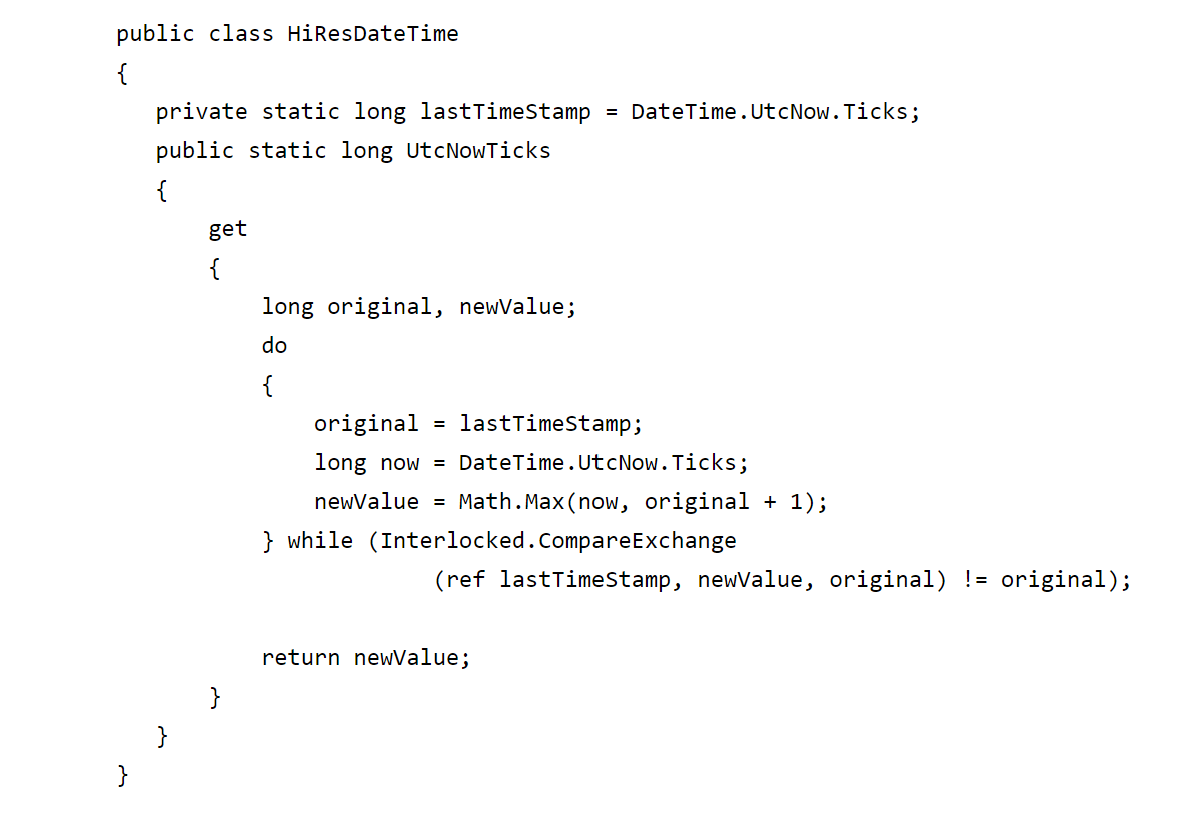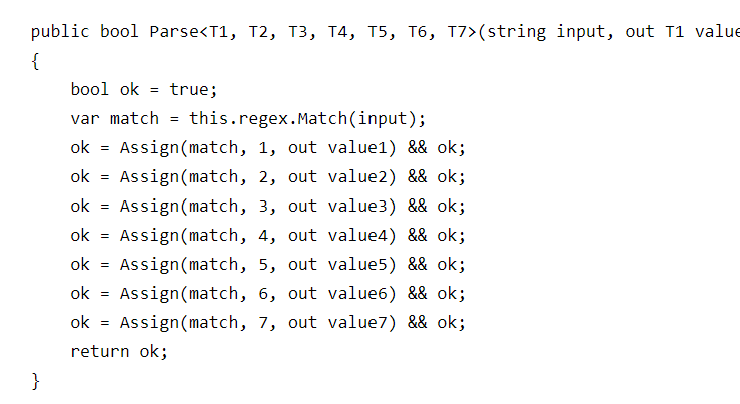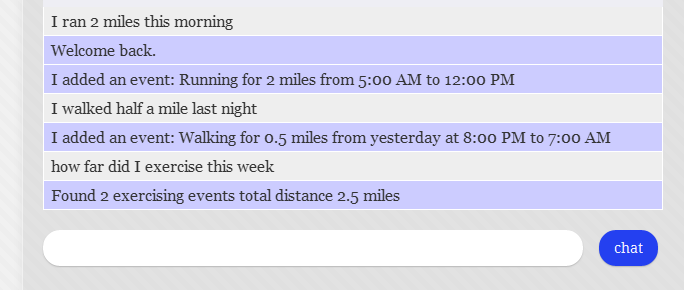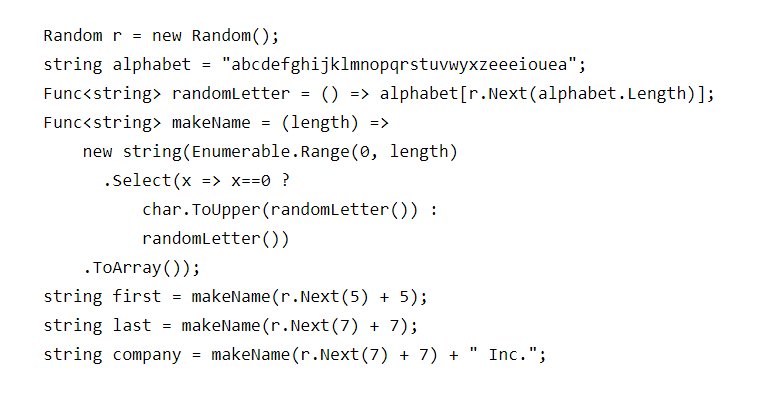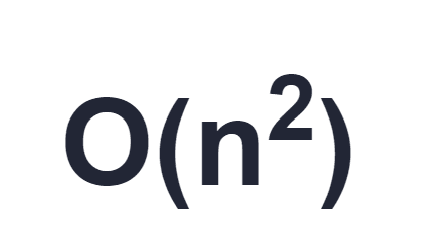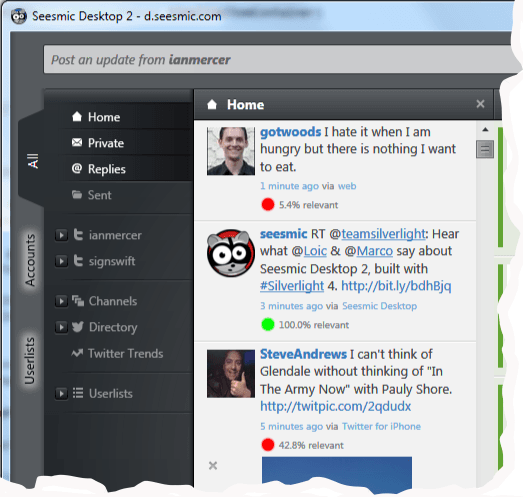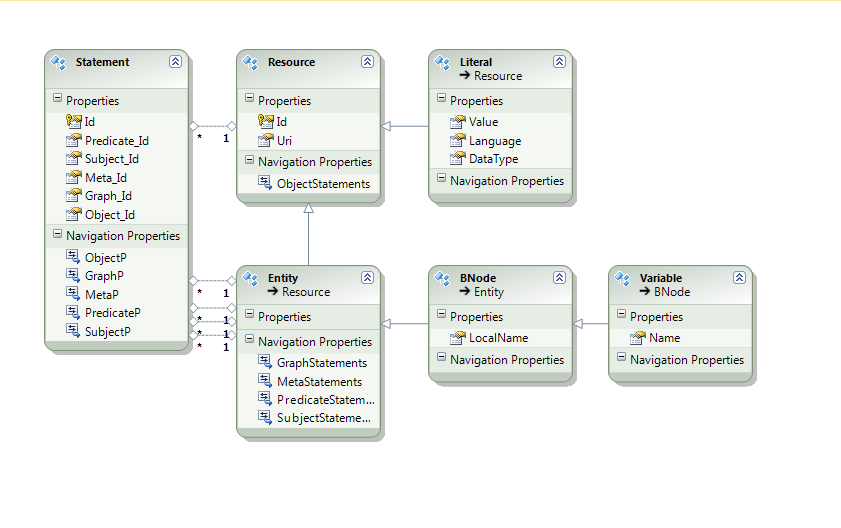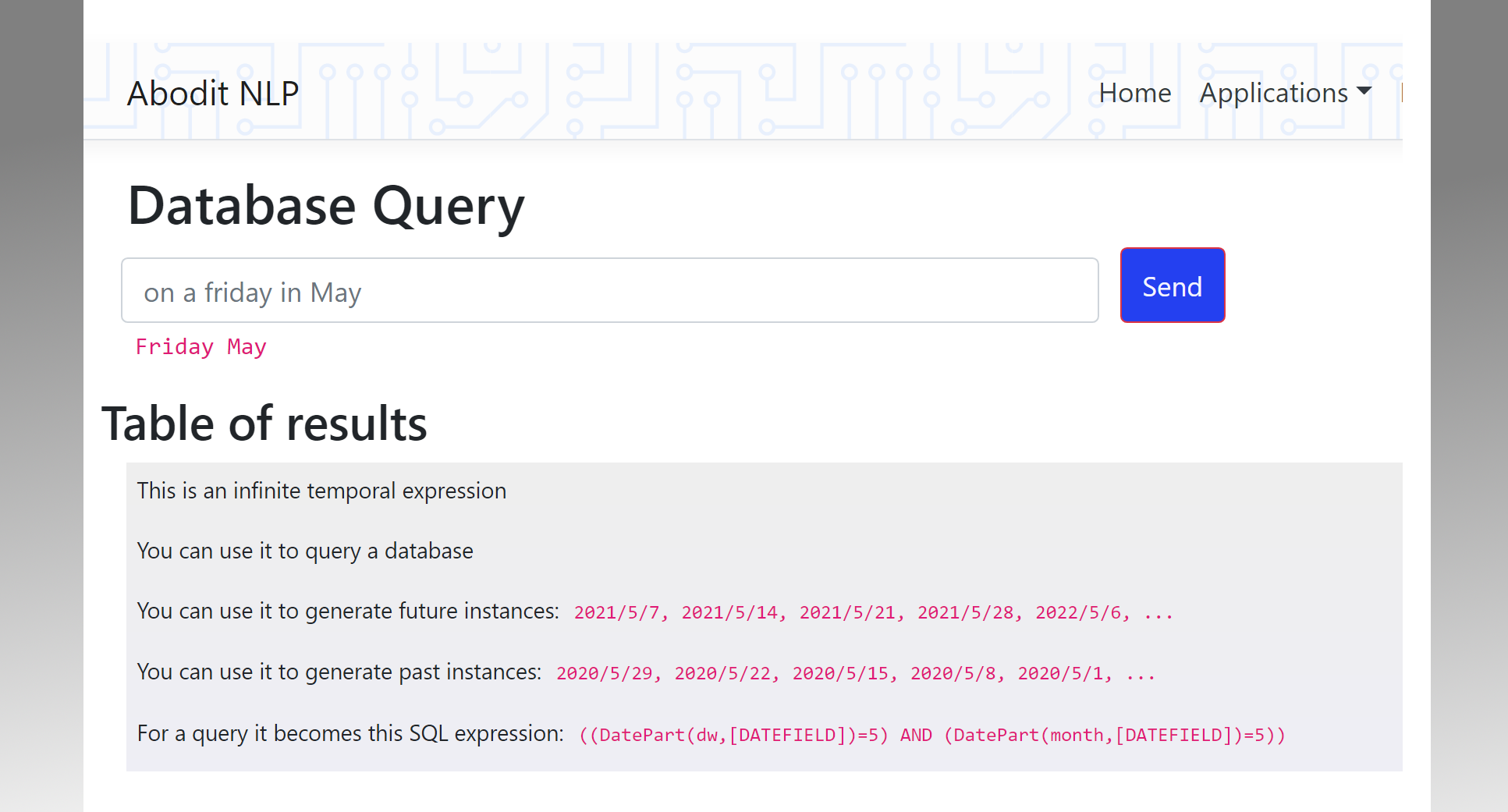Class-free persistence and multiple inheritance in C# with MongoDB
Much as I appreciate Object Relational Mappers and the C# type system there's a lot of work to do if you just want create and persist a few objects. MongoDB alleviates a lot of that work with its Bson serialization code that converts almost any object into a binary serialized object notation and provides easy round tripping with JSON.
But there's no getting around the limitations of C# when it comes to multiple inheritance. You can use interfaces to get most of the benefits of multiple inheritance but implementing a tangled set of classes with multiple interfaces on them can lead to a lot of duplicate code.
What if there was a way to do multiple inheritance without every having to write a class? What if we could simply declare a few interfaces and then ask for an object that implements all of them and a way to persist it to disk and get it back? What if we could later take one of those objects and add another interface to it? "Crazy talk" I hear you say!
Well, maybe not so crazy ... take a look at the open source project impromptu-interface and you'll see some of what you'll need to make this reality. It can take a .NET dynamic object and turn it into an object that implements a specific interface.
Combine that with a simple MongoDB document store and some cunning logic to link the two together and voila, we have persistent objects that can implement any interface dynamically and there's absolutely no classes in sight anywhere!
Let's take a look at it in use and then I'll explain how it works. First, let's define a few interfaces:
public interface ILegs { int Legs { get; set; } }
public interface IMammal { double BodyTemperatureCelcius { get; set; } }
// Interfaces can use multiple inheritance:
public interface IHuman: IMammal, ILegs { string Name { get; set; } }
// We can have interfaces that apply to specific instances of a class: not all humans are carnivores
public interface ICarnivore { string Prey { get; set; } }
Now let's take a look at some code to create a few of these new dynamic documents and treat them as implementors of those interfaces. First we need a MongoDB connection:
MongoServer MongoServer = MongoServer.Create(ConnectionString);
MongoDatabase mongoDatabase = MongoServer.GetDatabase("Remember",
credentials);
Next we grab a collection where we will persist our objects.
var sampleCollection = mongoDatabase.GetCollection<SimpleDocument>("Sample");
Now we can create some objects adding interfaces to them dynamically and we get to use those strongly typed interfaces to set properties on them.
var person1 = new SimpleDocument();
person1.AddLike<IHuman>().Name = "John";
person1.AddLike<ILegs>().Legs = 2;
person1.AddLike<ICarniovore>().Prey = "Cattle";
sampleCollection.Save(person1);
var monkey1 = new SimpleDocument(); monkey1.AddLike<IMammal>();
// mark as a mammal
monkey1.AddLike<ILegs>().Legs = 2;
monkey1.AddLike<ICarniovore>().Prey = "Bugs";
sampleCollection.Save(monkey1);
Yes, that's it! That's all we needed to do to create persisted objects that implement any collection of interfaces. Note how the IHuman is also an IMammal because our code will also support inheritance amongst interfaces. We can load them back in from MongoDB and get the strongly typed versions of them by using .AsLike() which returns a value of type T or null if that object doesn't implement the interface T. But that's not all, we can even add new interfaces to them later allowing an object to change type over time! Now, of course, you could do a lot of this just with dynamic types but then you lose Intellisense and compile time checking.
So next, let's take a look at how we can query for objects that support a given interface and how we can get strongly typed objects back from MongoDB:
var query = Query.EQ("int", typeof(IHuman).Name);
var humans = sampleCollection.Find(query);
Console.WriteLine("Examine the raw documents");
foreach (var doc in humans) { Console.WriteLine(doc.ToJson()); }
Console.WriteLine("Use query results strongly typed");
foreach (IHuman human in humans.Select(m => m.AsLike<IHuman>()))
{
Console.WriteLine(human.Name);
}
Console.ReadKey();
So how does this 'magic' work? First we need a simple Document class. It can be any old object class, no special requirements. At the moment it does wrap these interface properties up in a document inside it called 'prop' making it just a little bit harder to query and index but still fairly easy.
/// <summary>
/// A very simple document object
/// </summary>
public class SimpleDocument : DynamicObject
{
public ObjectId Id { get; set; }
// All other properties are added dynamically and stored wrapped in another Document
[BsonElement("prop")]
protected BsonDocument properties = new BsonDocument();
/// <summary>
/// Interfaces that have been added to this object
///</summary>
[BsonElement("int")]
protected HashSet<string> interfaces = new HashSet<string>();
/// <summary>
/// Add support for an interface to this document if it doesn't already have it
/// </summary>
public T AddLike<T>() where T:class
{
interfaces.Add(typeof(T).Name);
foreach (var @interface in typeof(T).GetInterfaces())
interfaces.Add(@interface.Name);
return Impromptu.ActLike<T>(new Proxy(this.properties));
}
/// <summary>
/// Cast this object to an interface only if it has previously been created as one of that kind
/// </summary>
public T AsLike<T>() where T : class
{
if (!this.interfaces.Contains(typeof(T).Name)) return null;
else return Impromptu.ActLike<T>(new Proxy(this.properties)); }
}
Then we need a simple proxy object to wrap up the properties as a dynamic object that we can feed to Impromptu:
public class Proxy : DynamicObject
{
public BsonDocument document { get; set; }
public Proxy(BsonDocument document)
{
this.document = document;
}
public override bool TryGetMember(GetMemberBinder binder, out object result)
{
BsonValue res = null;
this.document.TryGetValue(binder.Name, out res);
result = res.RawValue;
return true; // We always support a member even if we don't have it in the dictionary
}
/// <summary>
/// Set a property (e.g. person1.Name = "Smith")
/// </summary>
public override bool TrySetMember(SetMemberBinder binder, object value)
{
this.document.Add(binder.Name, BsonValue.Create(value));
return true;
}
}
And that's it! There is no other code required. Multiple-inheritance and code-free persistent objects are now a reality! All you need to do is design some interfaces and objects spring magically to life and get persisted easily.
[NOTE: This is experimental code: it's a prototype of an idea that's been bugging me for some time as I look at how to meld Semantic Web classes which have multiple inheritance relationships with C# classes (that don't) and with MongoDB's document-centric storage format. Does everything really have to be stored in a triple-store or is there some hybrid where objects can be stored with their properties and triple-store statements can be reserved for more complex relationships? Can we get semantic web objects back as meaningful C# objects with strongly typed properties on them? It's an interesting challenge and this approach appears to have some merit as a way to solve it.]
